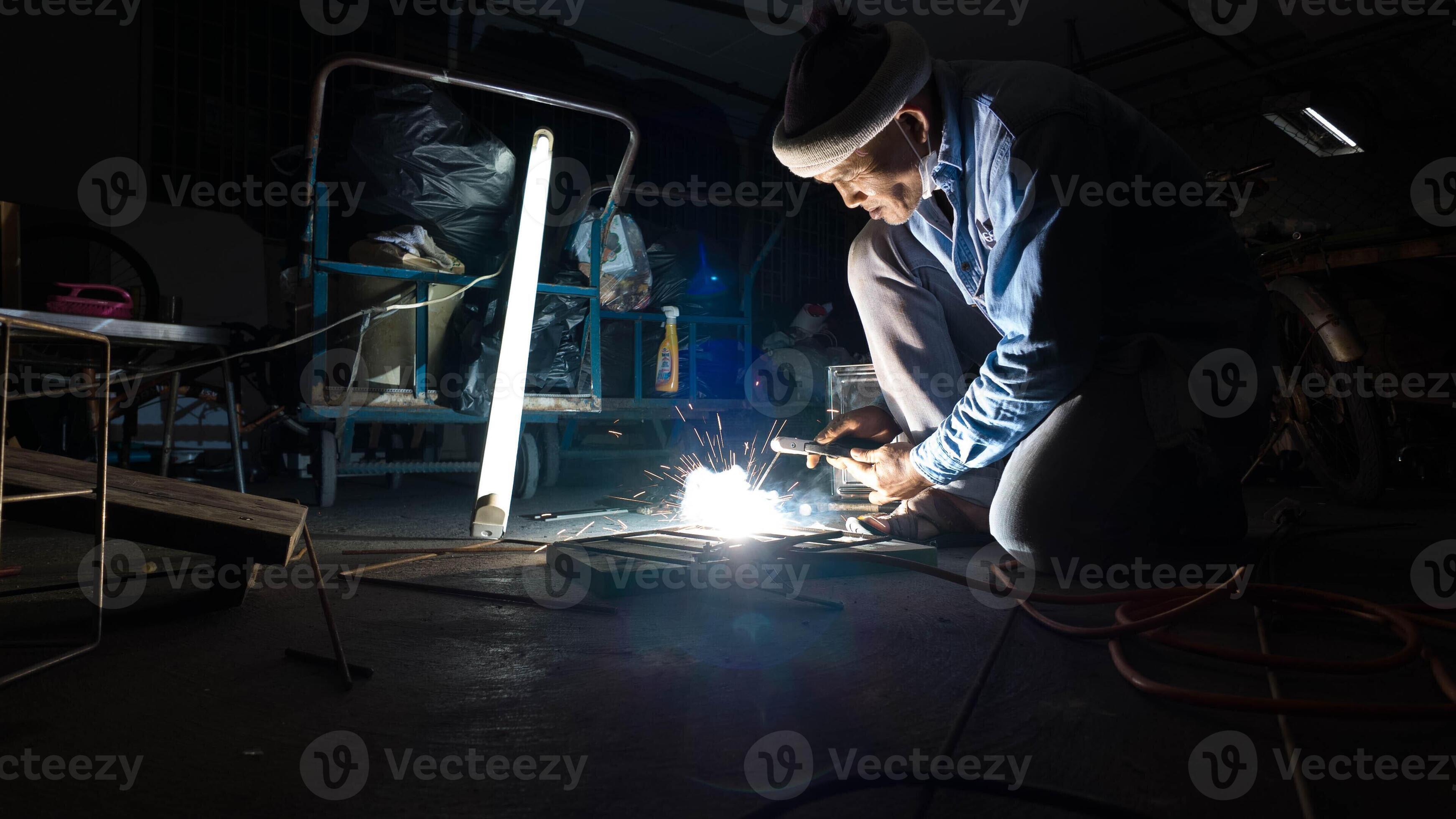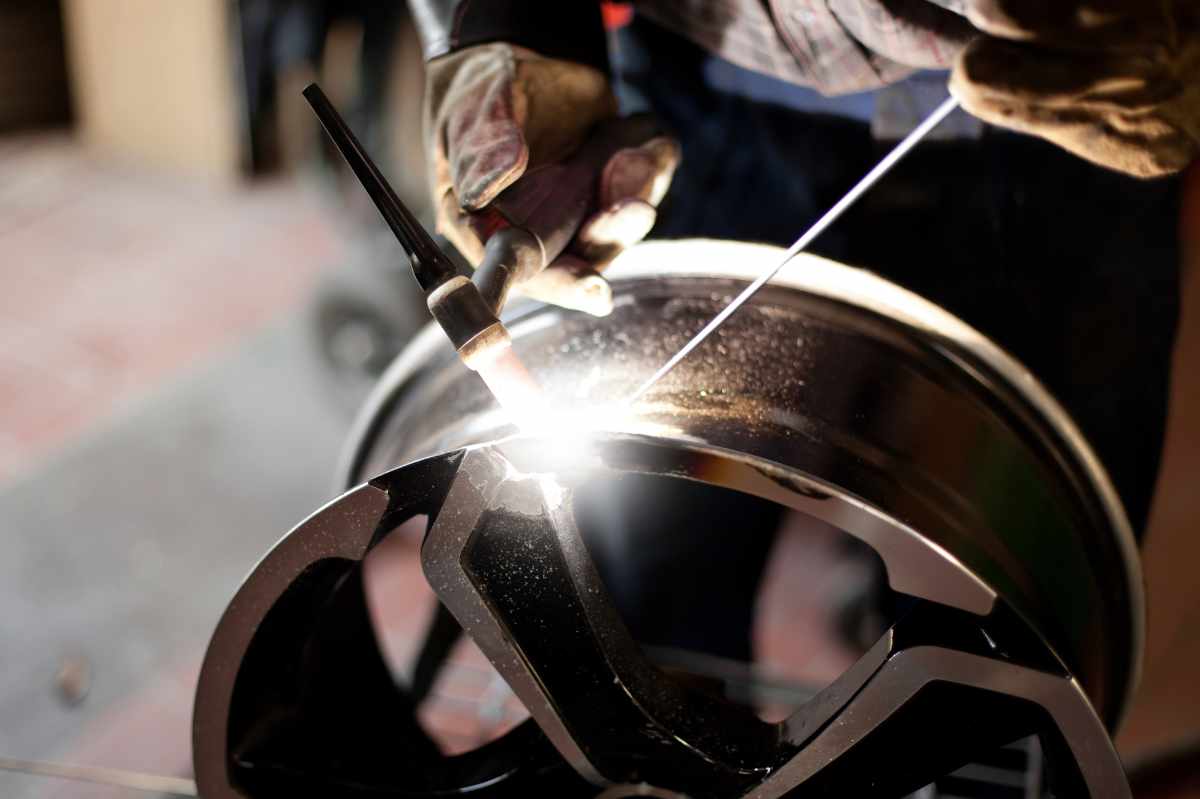Common Welding Repair Work Issues and Exactly How to Address Them Properly
Welding repair work often run into a variety of problems that can endanger the stability of the end product. Typical problems consist of inadequate penetration, porosity, and imbalance, amongst others. Each defect presents special obstacles that require details strategies for resolution. Comprehending these problems is vital for welders aiming to boost their skills and outcomes. This conversation will certainly discover these typical welding fixing issues and reliable approaches to resolve them.
Insufficient Penetration
Insufficient infiltration happens when the weld metal fails to completely fuse with the base material, causing weak joints and possible architectural failures. This concern usually stems from not enough heat input, incorrect electrode angle, or inappropriate welding rate. Welders may encounter inadequate infiltration as a result of a miscalculation of the required specifications for a certain material density or type. Furthermore, contamination on the base product's surface can prevent reliable bonding, aggravating the issue. To resolve poor infiltration, welders should ensure proper settings on their equipment and maintain a tidy job surface. Regular evaluation of welds is advised to determine any shortages early, permitting prompt improvements and the avoidance of endangered structural honesty in welded settings up.
Porosity
Porosity is a common issue in welded joints that shows up as tiny gas bubbles caught within the weld steel. This issue can jeopardize the integrity of the weld, bring about minimized strength and prospective failure under anxiety. Fabrication. Porosity commonly occurs from contamination, dampness, or inappropriate welding techniques, which enable gases to get away right into the molten weld pool. To address porosity, welders ought to guarantee correct surface preparation, preserve a tidy functioning setting, and utilize appropriate welding specifications. In addition, choosing the ideal filler material and shielding gas can reduce gas entrapment. Normal assessment and screening of welds can assist determine porosity early, assuring timely rehabilitative actions are taken, consequently maintaining the top quality and reliability of the welded framework
Misalignment
Imbalance in welding can arise from different elements, including inappropriate setup and thermal expansion. Comprehending the origin is important for efficient resolution. A number of correction strategies are available to straighten parts and guarantee architectural integrity.
Sources of Misalignment
Welding misalignment usually comes from a selection of underlying issues that can compromise structural integrity. One primary reason is inappropriate fit-up of elements prior to welding, which can lead to spaces and uneven surface areas. Variations in thermal growth throughout the welding process can additionally result in distortion, particularly if the products being signed up with have various coefficients of growth. Furthermore, insufficient clamping and fixturing might stop working to hold elements safely in place, bring about activity throughout welding. Inadequately conserved equipment, consisting of welding machines and devices, might introduce incongruities in the weld bead, further adding to imbalance. Ultimately, driver error, originating from not enough training or experience, can likewise play a considerable duty in producing misaligned welds.
Modification Techniques Available
Attending to imbalance efficiently requires a mix of rehabilitative techniques tailored to the certain problems at hand. One usual approach is making use of components or jigs to hold parts in the correct position during welding, making certain regular positioning. In addition, pre-heating the materials can help in reducing distortion and boost fit-up. For significant misalignment, mechanical adjustment techniques, such as utilizing hydraulic jacks or clamps, can be employed to fix the setting before welding. Post-weld warmth treatment might also be required to eliminate tensions brought on by misalignment. Lastly, careful assessment and change during the arrangement phase can avoid misalignment concerns from becoming significant troubles, promoting a smoother welding procedure and enhancing overall structural honesty.
Distortion
Distortion is an usual obstacle in welding that can emerge from different aspects, consisting of uneven heating & cooling. Understanding the reasons of distortion is important for applying reliable prevention techniques. Addressing this concern not only enhances architectural integrity yet also improves the total high quality of the weld.
Reasons for Distortion
When based on the intense warmth of welding, products frequently undertake changes that can cause distortion. This phenomenon primarily arises from thermal expansion and contraction during the welding procedure. As the weld area warms up, the product broadens; upon cooling, it acquires, which can produce inner anxieties. Furthermore, uneven home heating throughout a workpiece can exacerbate these tensions, causing useful content bending or flexing. The sort of material likewise plays a considerable role; metals with varying thermal conductivity and coefficients of development might react in a different way, resulting in unforeseeable distortions. Additionally, inadequate joint style and poor fixturing can add to misalignment during welding, increasing the possibility of distortion. Understanding these causes is essential for reliable welding fixing and avoidance strategies.
Avoidance Techniques
Reliable avoidance methods for distortion throughout welding concentrate on regulating heat input and ensuring appropriate joint design. Keeping a consistent heat input assists to lessen thermal expansion and tightening, which can lead to distortion. i was reading this Making use of methods such as pre-heating the workpiece can likewise reduce the temperature slope, promoting consistent home heating. Additionally, choosing ideal joint styles, such as T-joints or lap joints, can enhance security and decrease tension concentrations. Implementing appropriate fixturing to safeguard the workpieces in position additionally help in maintaining placement throughout the welding process. Ultimately, staggered welding series can distribute heat more evenly, protecting against localized distortion. By applying these approaches, welders can considerably lower the chance of distortion and improve the total high quality of their welds.
Splitting
Fracturing is a common issue encountered in welding repair services, usually resulting from numerous factors such as inappropriate air conditioning prices, material choice, or insufficient joint preparation. The event of fractures can considerably jeopardize the integrity of the weld, resulting in possible failures during procedure. To resolve this problem, welders should initially examine the origin, ensuring that products work and properly selected for the particular application. Additionally, managing the cooling rate during the welding procedure is essential; fast cooling can induce anxiety and result in splitting. Correct joint style and prep work likewise add to minimizing the threat. Applying these approaches can improve weld top quality and toughness, inevitably minimizing the likelihood of fracturing in ended up weldments.

Incomplete Blend
A considerable concern in welding repairs is insufficient fusion, which occurs when the weld steel does not effectively bond with the base product or previous weld passes - Belgrade Welding. This flaw can lead to weaknesses in the joint, potentially compromising the honesty of the welded framework. Variables adding to insufficient combination include insufficient warm input, inappropriate welding strategy, and contamination of the surfaces being joined. To resolve this concern properly, welders must ensure proper pre-weld cleaning and surface area preparation, along with adjust their welding parameters to achieve sufficient infiltration and combination. Regular assessment throughout the welding process can additionally assist identify insufficient fusion early, enabling timely restorative directory measures to boost the general high quality of the weld
Overheating
While welding fixings can improve architectural honesty, overheating offers a considerable difficulty that can cause material degradation. Extreme warm throughout welding can modify the mechanical residential or commercial properties of metals, leading to minimized toughness, increased brittleness, and warping. This phenomenon is specifically critical in high-stress applications where architectural integrity is extremely important. Determining overheating can include aesthetic inspections for staining or distortion, along with keeping track of temperature during the welding procedure. To mitigate the threats related to getting too hot, welders should employ suitable methods, such as regulating heat input, adjusting traveling speed, and using suitable filler materials. Additionally, executing pre- and post-weld warmth treatments can help bring back product properties and improve the total top quality of the repair service, making certain lasting performance and safety and security.
Regularly Asked Questions
What Are the Common Indications of a Welding Issue?

Exactly How Can I Test My Welds for Top quality?
To evaluate welds for top quality, one can make use of visual inspections, ultrasonic testing, and radiographic approaches. Each strategy guarantees architectural honesty, recognizes issues, and confirms adherence to defined criteria, inevitably improving the reliability of the welded joints.
What Security Safety Measures Should I Take While Welding?
When welding, one ought to prioritize security by putting on suitable individual protective equipment, making certain proper ventilation, safeguarding flammable products away, maintaining a tidy work area, and knowing environments to stop mishaps and injuries.
Can I Fix a Weld Without Remodeling the Entire Joint?
Repairing a weld without redesigning the entire joint is feasible, depending on the damages (Montana Mobile Welding and Repair). Methods such as grinding, adding filler material, or making use of a welding process can properly attend to details problems while protecting the surrounding structure
What Devices Are Necessary for Reliable Welding Repair Works?
Necessary tools for effective welding repair services include a welding equipment, cord brush, mill, safety gear, clamps, and filler products. Each tool plays a crucial duty in guaranteeing quality and safety and security during the repair service procedure. Porosity normally emerges from contamination, moisture, or improper welding methods, which permit gases to leave right into the liquified weld pool. Badly conserved devices, including welding devices and devices, might present variances in the weld grain, more adding to misalignment. When subjected to the intense heat of welding, products frequently go through modifications that can lead to distortion. Breaking is a common issue encountered in welding repair work, typically resulting from various aspects such as inappropriate cooling rates, material option, or inadequate joint prep work. A substantial problem in welding repair services is insufficient combination, which occurs when the weld metal does not adequately bond with the base material or previous weld passes.